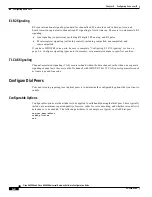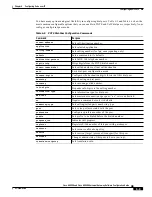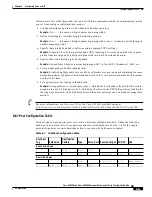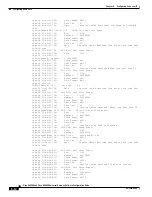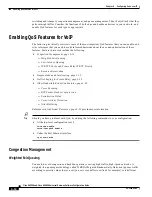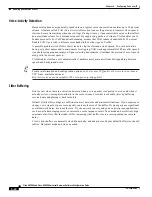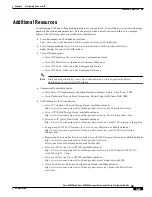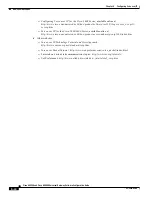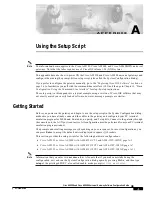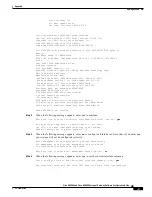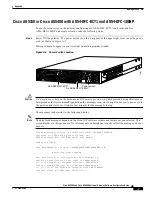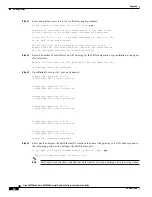
6-21
Cisco AS5350 and Cisco AS5400 Universal Gateway Software Configuration Guide
OL-3418-02 B0
Chapter 6
Configuring Voice over IP
Enabling QoS Features for VoIP
RTP Packet-Header Compression
Because of the repetitive nature of subsequent IP/UDP/RTP (network/transport/session-layer) headers,
you can compress them significantly. A recommended methodology is cRTP (Compressed Real-Time
Transfer Protocol), which, by tracking first-order and second-order differences between headers on
subsequent packets, compresses the 40-byte header to just 2 or 4 (without or with UDP checksum) bytes.
Other methodologies may be preferable if cRTP’s high CPU usage causes delay. Employ a compression
methodology on both ends of low-bandwidth (<1.5 Mbps) WAN circuits, but not at all on high-speed
(>1.5 Mbps) WANs.
Tip
For more information and configuration options, see Voice over IP Quality of Service for Low-Speed
PPP Links, available online at
http://www.cisco.com/warp/public/788/voice-qos/voip-mlppp.html
Serialization Delay
You can control packet (payload) size—which, in turn, controls how long one packet takes to be placed
on the system interface. Set this in bytes, ideally equating to no greater than 20 ms (typically equivalent
to two 10-ms voice samples per packet). Increasing serialization delay increases end-to-end delay. You
want to incur no more than 150-to-200 ms of 1-way, end-to-end delay.
Note
Take care when you assign a payload size for your chosen codec. To assign a codec and payload size,
you use the codec codec bytes payload_size command under the dial-peer voip command. Although the
codec command permits a wide range of payload sizes, the universal port card permits a much smaller
range of sizes, to help ensure that end-to-end delay for voice signals does not exceed 200 ms. For the
(default) g729r8 codec, these sizes are just 10ms, 20ms (recommended), and 30ms, which correspond to
10 bytes, 20 bytes, and 30 bytes of payload. If your network uses a variety of gateway and router types,
you may need to ensure that payload sizes are set both optimally (so as not to incur excessive end-to-end
delay) and consistently.
Tip
For more information and configuration options, see Voice over IP—Per Call Bandwidth Consumption,
available online at
http://www.cisco.com/warp/public/788/pkt-voice-general/bwidth_consume.html


